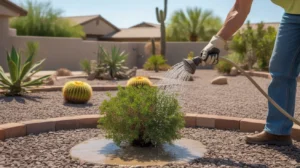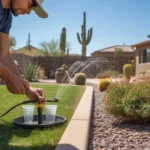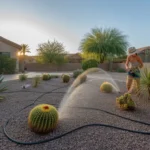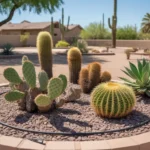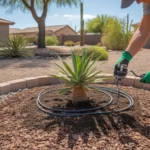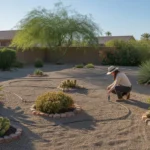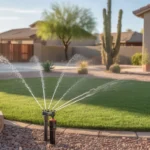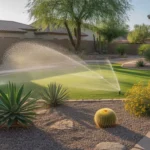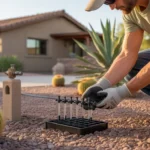Irrigation in the Southeast Valley often leads to a sneaky problem: salt buildup in the soil. As our water evaporates under the intense Arizona sun, dissolved minerals are left behind, accumulating over time. These salts can harm plant roots, leading to stunted growth, leaf burn, and even plant death. Fortunately, we have a powerful tool to fight back: deep watering techniques that flush salts from the root zone.
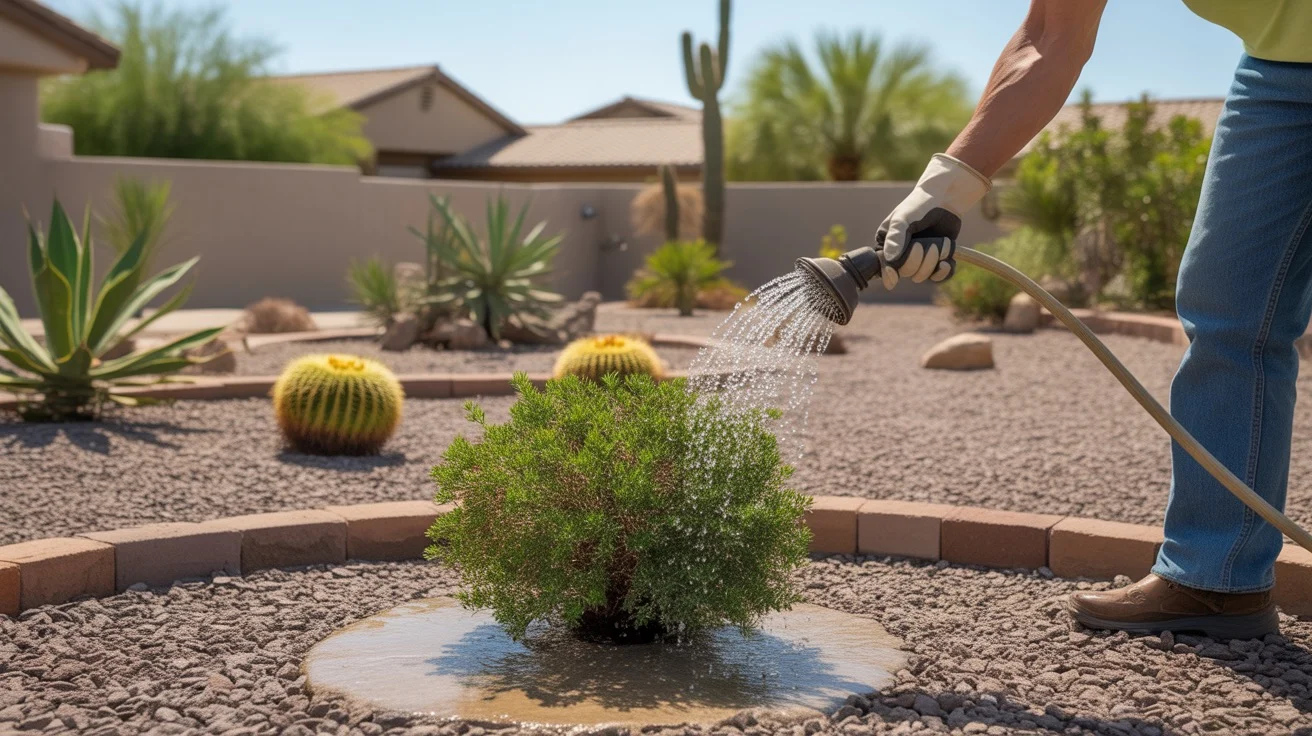
Understanding Salt Buildup in Southeast Valley Soils
Our water in the Southeast Valley, whether from the tap or wells, contains dissolved salts and minerals. When we irrigate, the water evaporates or is used by plants, but the salts remain in the soil. Over time, these salts concentrate, leading to saline soil conditions that stress plants and inhibit nutrient uptake.
Salt buildup is especially problematic in areas with poor drainage, heavy clay soils, or shallow watering practices. Symptoms of salt stress include yellowing leaves, brown leaf tips or margins, stunted growth, and poor vigor. In severe cases, plants may wilt and die, even when the soil is moist.
To manage salt buildup, we need to periodically leach salts below the root zone using deep watering techniques. This involves applying enough water to flush salts deeper into the soil profile, away from plant roots.
How Deep Watering Flushes Salts
Deep watering means applying water slowly and deeply, allowing it to penetrate 12 to 18 inches into the soil. This is much deeper than a typical sprinkler or drip irrigation cycle, which may only wet the top few inches.
As the water percolates down through the soil, it dissolves and carries salts with it. The key is to apply enough water to push the salts below the root zone, but not so much that we waterlog the soil or waste water. A good rule of thumb is to apply 1 to 2 inches of water per leaching event.
The frequency of deep watering depends on factors like soil type, water quality, and climate. In the Southeast Valley, leaching may be needed every 1 to 2 months during the growing season, especially if using high-salinity water. Sandy soils may need more frequent leaching than clay soils.
Techniques for Deep Watering
There are several ways to accomplish deep watering in a Southeast Valley landscape:
- Sprinklers: Run sprinklers for an extended cycle, applying 1 to 2 inches of water. Use catch cups to measure output and adjust run times accordingly. Move sprinklers to avoid runoff.
- Soaker hoses: Run soaker hoses for several hours to deeply saturate the soil. Snake the hoses through beds for even coverage.
- Drip irrigation: Convert to inline emitter tubing with higher flow rates to apply water faster for periodic deep watering. Add multiple lines per plant to speed up application.
- Hand watering: Use a hose or watering wand to deeply soak the root zones of trees, shrubs, and beds. Apply water slowly to avoid runoff.
After deep watering, let the soil partially dry before the next regular irrigation to prevent waterlogging and allow air to re-enter the soil pores.
Monitoring Salt Levels
To gauge the effectiveness of your leaching efforts, periodically test the soil salinity. Home test kits or meters can measure the electrical conductivity (EC) of the soil, which correlates to salt levels. Aim to keep the EC below 2 mS/cm for most landscape plants.
You can also observe plant health and vigor. If you notice salt stress symptoms, increase the frequency or duration of deep watering. Drought-tolerant plants like many desert-adapted natives can handle higher salinity levels than sensitive exotic species.
Keep in mind that deep watering to leach salts is an ongoing process. Salts will continue to accumulate with each irrigation cycle, so regular leaching is needed to keep levels in check.
Other Tips to Manage Salts
In addition to deep watering, there are other practices that can help manage salt buildup in Southeast Valley landscapes:
- Improve drainage: Break up compacted soils, add organic matter, and grade beds to promote drainage. Salts accumulate more in poorly-draining soils.
- Adjust sprinklers: Prevent spray from hitting plant leaves, where water can quickly evaporate and leave salts behind. Adjust nozzles to keep spray low and use larger droplets.
- Mulch beds: A layer of organic mulch helps retain soil moisture and regulate temperatures, reducing evaporation and salt buildup.
- Choose tolerant plants: Select salt-tolerant species adapted to local conditions. Many desert natives like mesquite, palo verde, and desert willow can handle moderate salinity.
With proper irrigation practices and regular leaching, we can effectively manage salt buildup and keep our Southeast Valley landscapes healthy and vibrant. Deep watering is a powerful tool in our arsenal, flushing salts away from plant roots and promoting optimal growing conditions.
So next time you irrigate, consider giving your yard a deep drink to battle salt buildup. Your plants will thank you with lush growth and resilient vigor, even in our challenging desert environment.

